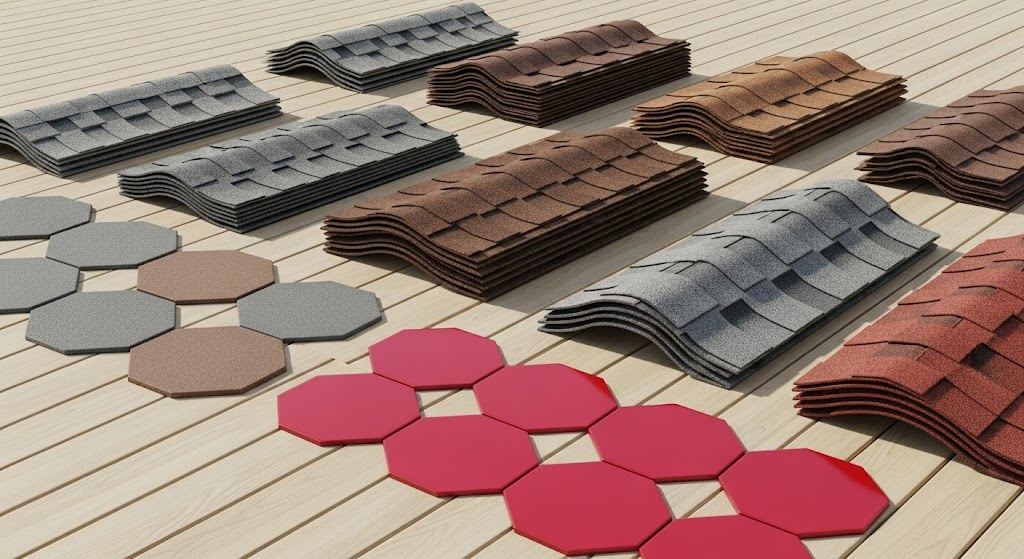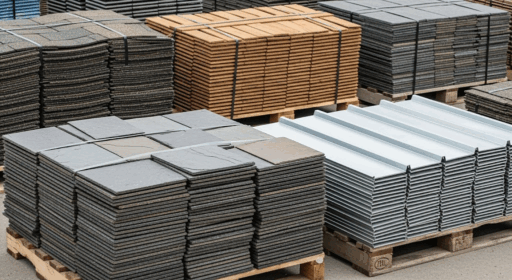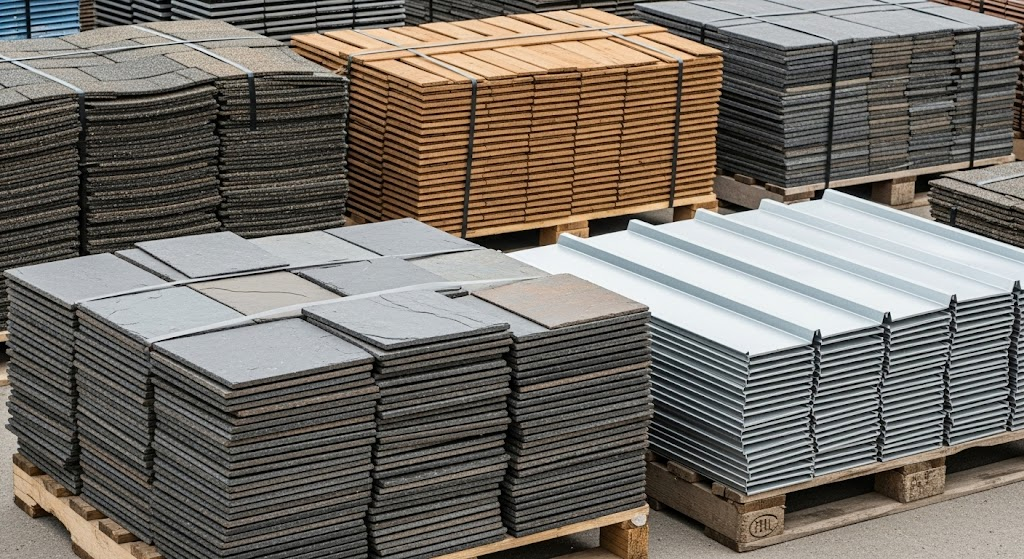Planning a roofing project? And not sure how much a square of shingles weighs? It varies widely depending on the material and type.
I promise to show you exactly how much different shingle types weigh per square and pallet. You’ll also learn why this matters for transportation costs, structural safety, and your budget.
In this blog, I’ll cover shingle weights by type, explain squares versus bundles, and share practical buying tips. Plus, I’ll help you calculate the total weight your roof will carry. Let’s start with the basics.
What is a Square and a Pallet of Shingles?
When I first started learning about roofing, the terminology confused me. Let me clear this up for you.
A square in roofing isn’t about shape. It’s a measurement that covers exactly 100 square feet of roof space. So if your roof measures 20 feet by 30 feet, that’s 600 square feet, or 6 squares total.
Think of it this way: one square equals a 10×10 foot area. Roofers use this term because it makes calculating materials much easier than dealing with individual square footage.
A pallet is completely different. It’s how suppliers ship and store shingles. Picture a wooden platform stacked high with shingle bundles. Most pallets hold between 16 to 21 squares, depending on the shingle type and manufacturer.
I always tell homeowners to think of pallets as bulk shipping units. They’re designed for contractors who need large quantities. But even if you’re doing a smaller project, understanding pallets helps you estimate delivery costs and storage space.
How Much Does a Square of Shingles Weigh?
The weight of a square varies dramatically based on the material you choose. I’ve worked with different types over the years, and the differences always surprise people.
1. Asphalt Shingles: 150-250 pounds per square
These are the most common choices for good reason. Three-tab asphalt shingles weigh around 150-200 pounds per square.
Architectural shingles are heavier at 200-250 pounds because they’re thicker and more durable. They’re also the most budget-friendly option, typically costing $100-300 per square.
2. Wood Shingles: 300-400 pounds per square
Cedar and other wood shingles pack more weight due to their thickness and density.
I find they create a beautiful natural look, but they cost significantly more at $300-600 per square. The extra weight means you might need additional roof support.
3. Slate and Clay: 800-1,000+ pounds per square
These are the heavyweights of roofing materials. Clay tiles usually weigh 800-900 pounds per square, while natural slate can exceed 1,000 pounds. They last decades longer than other materials but cost $600-1,500 per square foot. Most homes need structural reinforcement before installation.
4. Metal Shingles: 100-150 pounds per square
Here’s the lightweight champion. Steel and aluminum shingles weigh much less than traditional materials. They cost $300-800 per square but offer excellent durability and energy efficiency.
How Many Bundles of Shingles in a Square?

This is one of the most common questions I get from homeowners. The answer isn’t always the same, but there’s a clear pattern.
Standard Asphalt Shingles: 3 bundles per square
Most three-tab and basic architectural shingles follow this rule. I can count on needing exactly 3 bundles to cover 100 square feet. This makes the math simple when I’m estimating materials.
Heavier Shingles: 4-5 bundles per square. Here’s where it gets tricky:
- Premium architectural shingles: Often need 4 bundles per square
- Luxury or designer shingles: Can require 4-5 bundles per square
- Specialty shapes: Like hexagonal or scalloped edges, need more bundles
How Much Does a Pallet of Shingles Weigh?
A standard pallet is heavy. Really heavy. I’m talking about weights that require special equipment to move safely.
Most pallets hold between 42-50 bundles of shingles. The exact number depends on the manufacturer and shingle thickness. Here’s what I’ve seen in the field:
- Asphalt shingles: 2,000-2,500 pounds per pallet
- Architectural asphalt: 2,500-3,200 pounds per pallet
- Wood shingles: 3,500-4,000 pounds per pallet
- Clay tiles: 4,000-5,000+ pounds per pallet
- Metal shingles: 1,500-2,000 pounds per pallet
Factors That Affect Shingle Weight
Several factors influence how much your shingles will weigh. I’ve noticed these differences can significantly impact your project planning and costs.
1. Material Density and Thickness: Thicker shingles always weigh more. I’ve seen architectural shingles that are twice as thick as basic three-tab versions. Dense materials like slate pack more weight per square inch than lighter asphalt compositions.
2. Moisture Content (in Wood Shingles): Wood shingles can double in weight when wet. I always factor this in during rainy seasons.
Fresh-cut cedar holds more moisture than kiln-dried options, affecting both weight and installation timing for your project.
3. Added Features (Lamination, Coating): Extra layers mean extra weight. I find that laminated shingles with multiple asphalt layers weigh 20-30% more than single-layer versions.
Reflective coatings and granule treatments also add pounds to each bundle you’ll handle.
4. Manufacturer Variations: Different brands use varying material thicknesses. I’ve weighed identical-looking shingles from two manufacturers and found 15-20 pound differences per square. Always check specific product weights rather than assuming they’re all the same.
Buying and Handling Shingles
| Aspect | Details |
|---|---|
| Where to Buy | Big Box Stores like: Easy access, smaller quantities |
| Delivery Considerations | May require liftgate service Pallet unloading needs a forklift Ensure the driveway can support the load |
| Storage and Handling Tips | Avoid stacking too high (prevents bundle damage) Keep dry and covered to avoid material degradation |
| DIY vs. Pro Installation | Heavier shingles require more labor and tools Pros have equipment (hoists, conveyors) to handle large loads |
The Bottom Line
Now you know the real numbers. Asphalt shingles weigh 150–250 pounds per square, while slate can hit 1,000+ pounds.
Wondering how much does a square of shingle weigh? That’s not just trivia, it’s essential planning information. I’ve seen too many projects go wrong because homeowners ignored weight factors.
Your roof structure, delivery costs, and installation complexity all depend on these numbers. A pallet weighing 3,000 pounds needs different handling than a 150-pound bundle you can carry yourself.
Before you buy, calculate your total roof weight and confirm your structure can handle it. Smart planning now prevents expensive problems later. Your roof will thank you for doing the math first.








